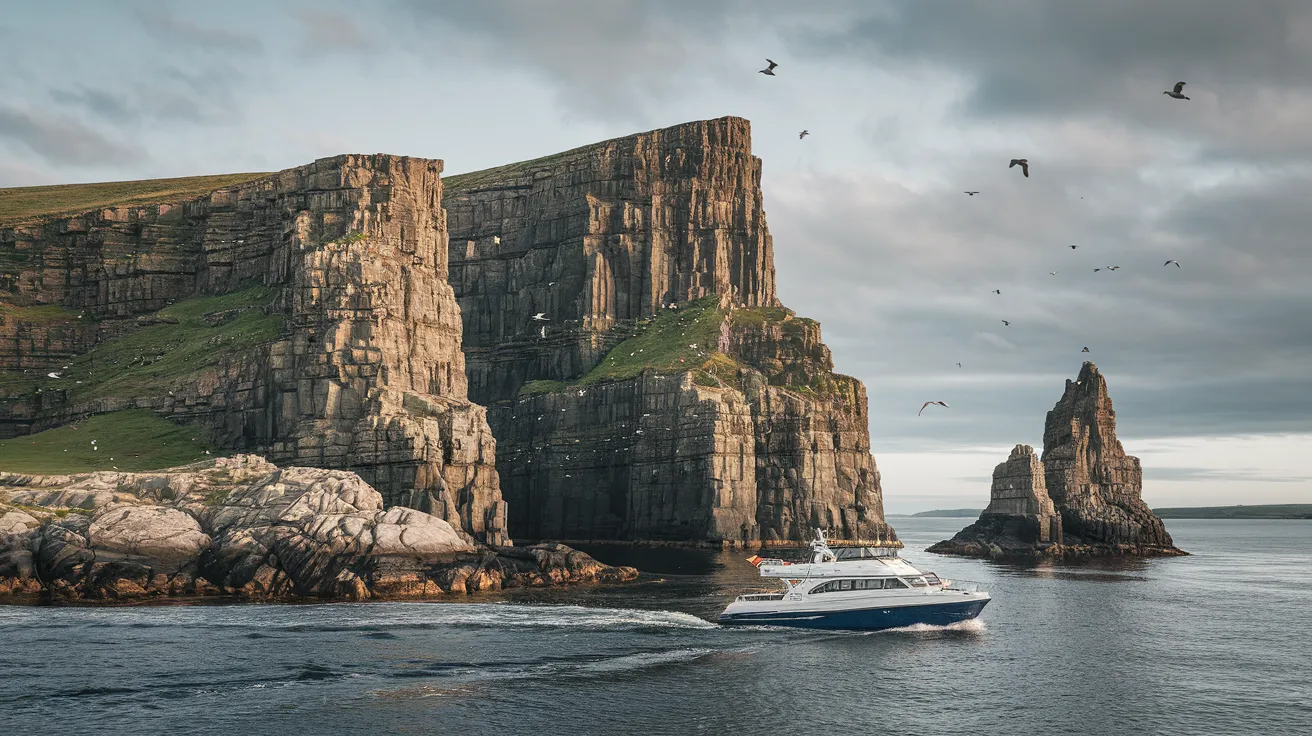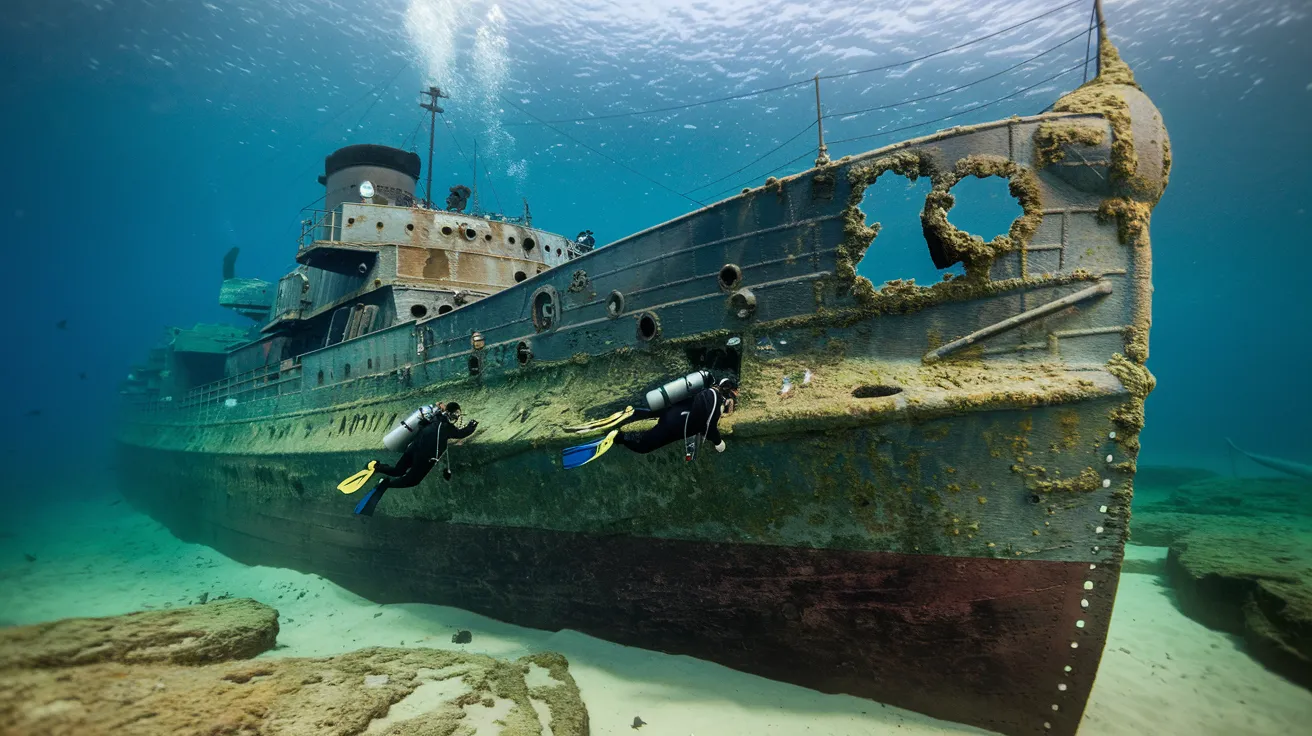Quick Navigation
- Guardians of the Northern Seas: An Overview
- Key Orkney Lighthouses: Profiles in Light
- Engineering Marvels: The Stevenson Legacy
- Automation and the Modern Era
- Visiting Orkney's Lighthouses
- Maritime History and Shipwrecks
- Frequently Asked Questions
- Can you go inside Orkney lighthouses?
- Who built most of Orkney's lighthouses?
- Are the lighthouses still needed with modern GPS?
- Which is the most impressive Orkney lighthouse to visit?
Standing sentinel against stormy seas and rugged coastlines, Orkney's lighthouses are more than just navigational aids; they are iconic symbols of maritime heritage, engineering prowess, and the enduring relationship between islanders and the sea. Built largely by the legendary Stevenson family of engineers and maintained by the Northern Lighthouse Board, these beacons have guided mariners through treacherous waters for over two centuries. Exploring Orkney's lighthouses offers dramatic views, insights into maritime history, and an appreciation for the skill and dedication required to keep the lights shining.
Guardians of the Northern Seas: An Overview
Orkney's position at the crossroads of the Atlantic Ocean and the North Sea, combined with its complex network of islands, sounds, and tidal races (like the notorious Pentland Firth), made navigation historically perilous. The establishment of the Northern Lighthouse Board (NLB) in 1786 marked the beginning of systematic efforts to improve maritime safety. The NLB commissioned the renowned Stevenson family – Robert Stevenson and his descendants – to design and build most of Orkney's major lights throughout the 19th century. These engineers overcame immense challenges, constructing robust towers on remote, wave-battered cliffs and skerries, incorporating innovations like revolving lights and advanced lens systems (Fresnel lenses) to project powerful beams far out to sea.
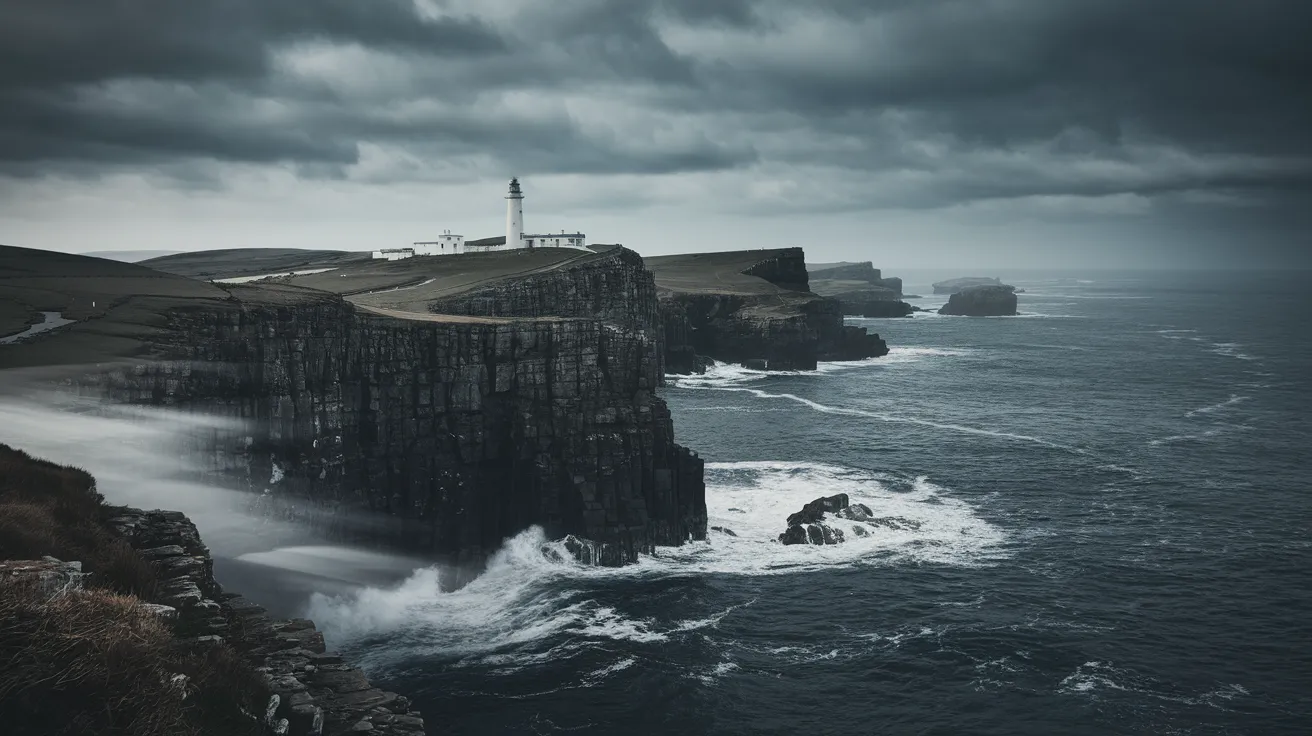
Key Orkney Lighthouses: Profiles in Light
While Orkney has numerous lights, several stand out for their history, design, or location:
- Start Point (Sanday): Unique in Scotland for its striking vertical black and white stripes, designed as a highly visible daymark. Built by Robert Stevenson in 1806 (replacing an earlier light on North Ronaldsay), it was automated in 1964. Its light flashes white every 20 seconds.
- Noup Head (Westray): Perched dramatically on 79-metre cliffs, this 24-metre tower was built by David A. Stevenson in 1898. It housed Scotland's first mercury flotation system for rotating its powerful lens, guarding the hazardous North Shoal. Automated in 1964, it's also a fantastic spot for seabird watching.
- Cantick Head (Hoy/South Walls): Built by Alan Stevenson in 1858, this lighthouse marks the southern approach to Scapa Flow from the Pentland Firth. Its foghorn (added 1913) was crucial in poor visibility. Automated in 1991, its former keepers' cottages are sometimes available as holiday lets.
- Graemsay Lighthouses (Hoy Sound High & Low): A pair of towers (23m and 13m high) built in 1851 to provide 'leading lights' guiding ships safely through Hoy Sound into Stromness harbour. When the two lights align vertically, a vessel is on the correct channel. Automated in 1994.
- North Ronaldsay: Scotland's tallest land-based lighthouse at 42 metres (139 ft). Built in 1854 (replacing Start Point as the primary North Isles light), its distinctive red brick tower is visible for miles. Automated in 1998.
- Others: Lighthouses on Copinsay, Auskerry, Pentland Skerries, and Brough of Birsay also play vital roles in Orkney's navigational network.
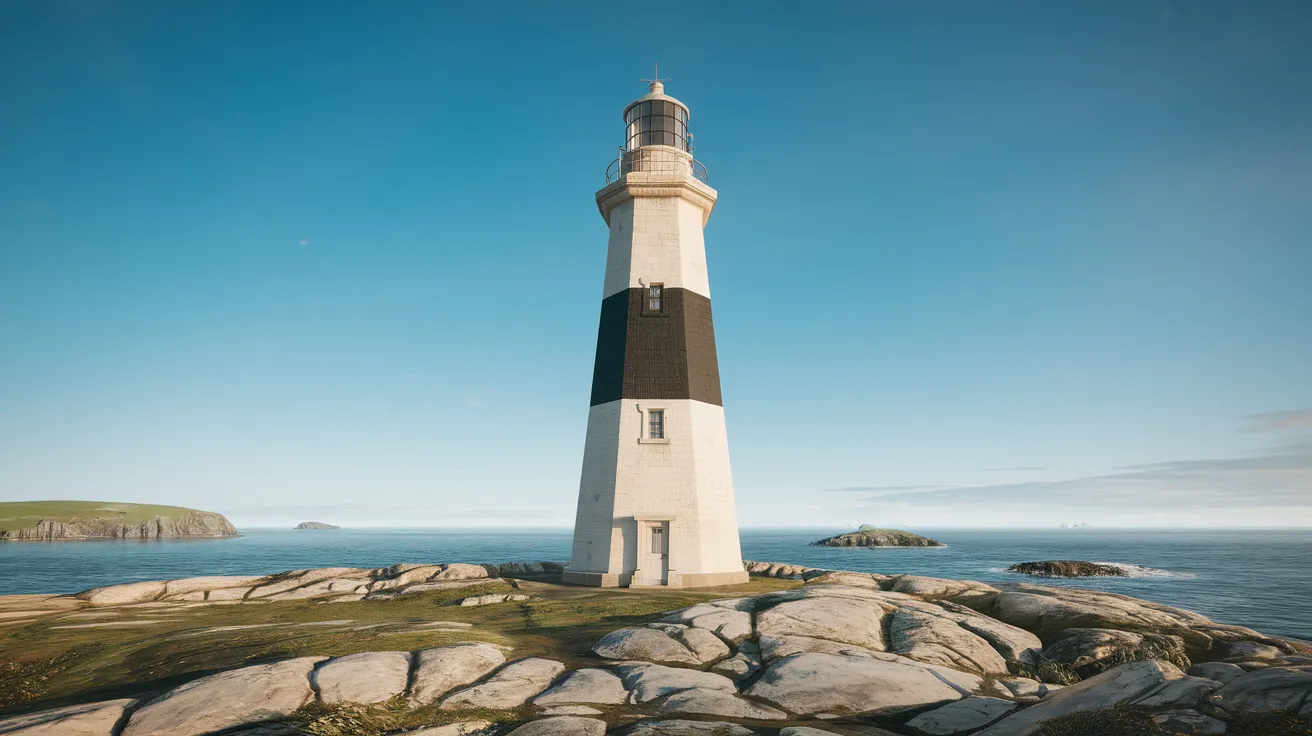
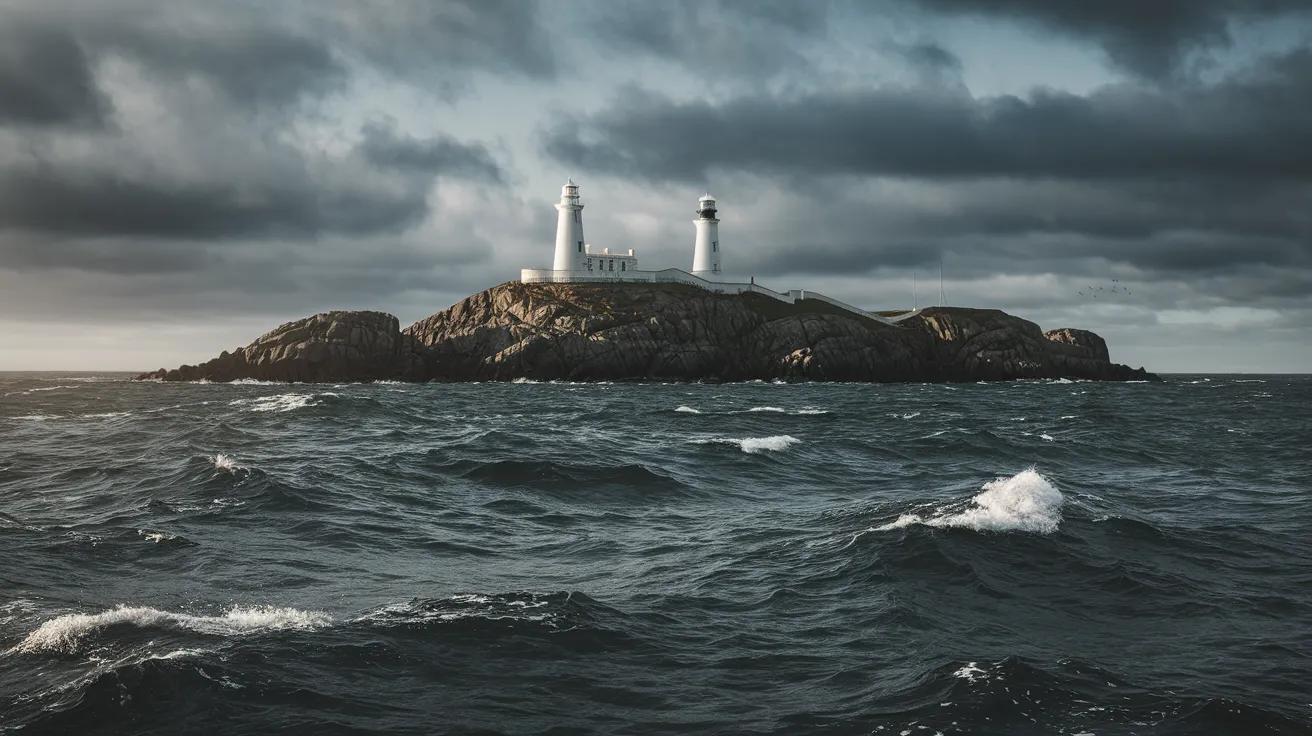
Engineering Marvels: The Stevenson Legacy
Building lighthouses on Orkney's exposed coasts was a monumental undertaking. The Stevensons employed innovative techniques and robust designs:
- Architecture: Typically tapered cylindrical towers built from interlocking blocks of granite or durable brick, designed to withstand hurricane-force winds and wave impacts.
- Foundations: Often required complex excavation and foundation work on precarious cliff edges or wave-swept skerries.
- Logistics: Transporting heavy materials and equipment to remote island locations without modern harbours was a major challenge, often requiring the construction of temporary jetties.
- Optical Systems: The Stevensons were pioneers in adopting Augustin-Jean Fresnel's revolutionary lens system, using precisely cut glass prisms to concentrate light into powerful beams visible for many miles. Many Orkney lighthouses feature intricate Fresnel lenses, masterpieces of 19th-century optical engineering.
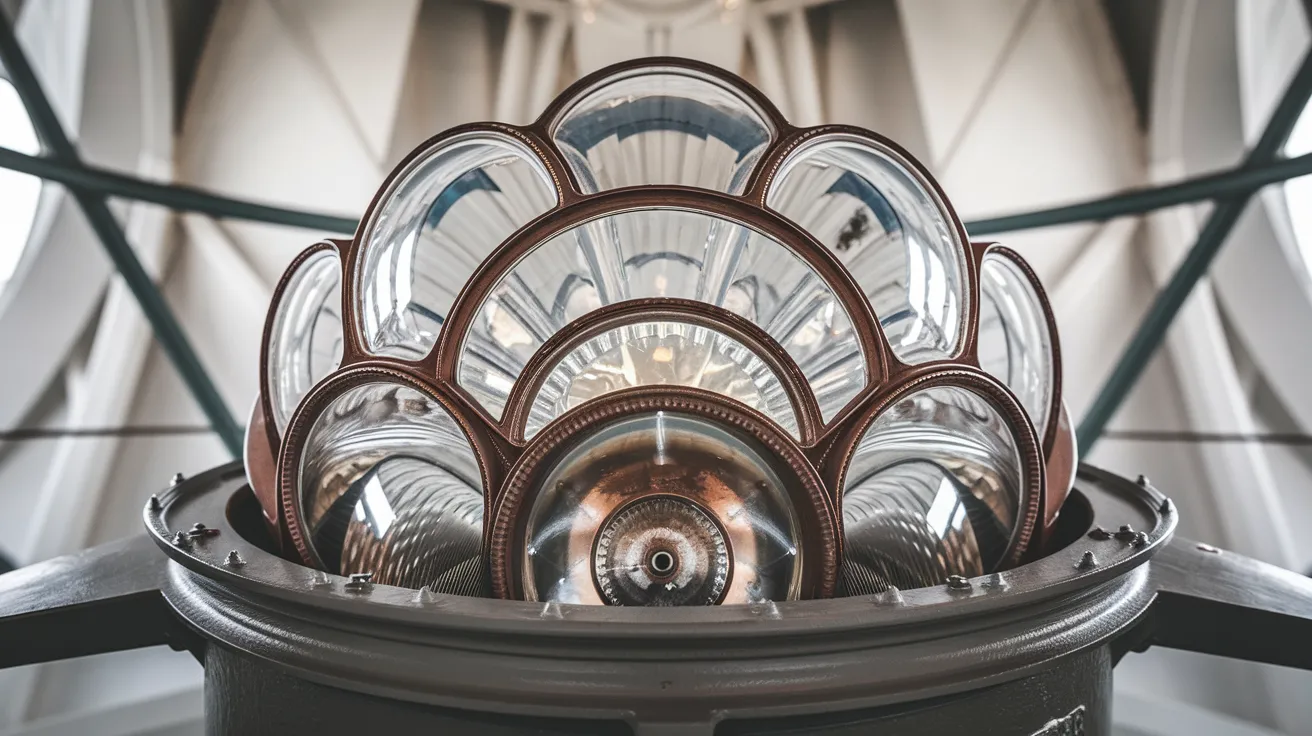
Automation and the Modern Era
For over a century, Orkney's lighthouses were manned by dedicated keepers and their families, living often isolated lives to maintain the lights. The transition to automation began in the 1960s (e.g., Auskerry 1961, Start Point & Noup Head 1964) and was largely completed by the late 1990s. Today, the lights are monitored remotely by the NLB in Edinburgh, using solar power and modern LED technology. While the era of the resident keeper has passed, the lighthouses remain vital aids to navigation for ferries, fishing boats, tankers, and leisure craft navigating Orkney's busy and often challenging waters.
Visiting Orkney's Lighthouses
While interior access to operational lighthouses is generally restricted for safety and security reasons, visitors can still appreciate these structures:
- Exterior Views: Most lighthouses can be viewed and photographed from nearby coastal paths or viewpoints. Sites like Noup Head, Cantick Head, and Brough of Birsay offer spectacular settings.
- Boat Trips: Several local operators offer boat trips that provide unique perspectives of coastal lighthouses like Copinsay or those guarding Scapa Flow entrances.
- Graemsay: Take the passenger ferry from Stromness to Graemsay and walk between the Hoy Sound High and Low lights.
- Museums: The Stromness Museum often has exhibits related to local lighthouses and maritime history. The Scapa Flow Museum on Hoy covers the naval importance of the lights.
- Accommodation: Some former keepers' cottages are now available as unique self-catering accommodation (e.g., Cantick Head), offering an immersive lighthouse experience.
Maritime History and Shipwrecks
Orkney's lighthouses stand as testament to the dangers of its waters. Before their construction, shipwrecks were tragically common. While specific wrecks directly prevented by each light are hard to pinpoint, the lights guard known hazards:
- Noup Head watches over the North Shoal.
- Pentland Skerries lights mark the treacherous Pentland Firth.
- Lights around Scapa Flow guide vessels through its entrances, historically vital during wartime.
- The loss of HMS Hampshire near Marwick Head in 1916, though due to a mine, underscores the dangers the lights mitigate.
To find relevant videos, search YouTube for "Orkney Lighthouses drone" or "Northern Lighthouse Board Orkney".
Frequently Asked Questions
Can you go inside Orkney lighthouses?
Generally, no. As operational aids to navigation, interior access is usually restricted. Occasional open days might be organised, but check with the NLB or local sources. Some former keepers' cottages offer accommodation.
Who built most of Orkney's lighthouses?
The Stevenson family of engineers (Robert, Alan, David, Thomas) designed and oversaw the construction of most major Orkney lighthouses during the 19th century for the Northern Lighthouse Board.
Are the lighthouses still needed with modern GPS?
Yes. Lighthouses provide essential visual confirmation for mariners, act as backups to electronic systems, and are crucial in poor weather or situations where GPS might fail or be inaccurate close to shore.
Which is the most impressive Orkney lighthouse to visit?
This is subjective! Noup Head offers dramatic cliff scenery, Start Point has unique markings, North Ronaldsay is the tallest, and St Magnus Cathedral (though not a lighthouse) is Orkney's most famous landmark often seen by mariners.
Orkney's lighthouses are enduring symbols of resilience, standing against the elements to ensure safe passage. Visiting these often remote and dramatic locations offers a powerful connection to the islands' maritime soul and the ingenuity of those who built and maintained these vital beacons. Consider finding Orkney accommodation that offers views of these guiding lights.

